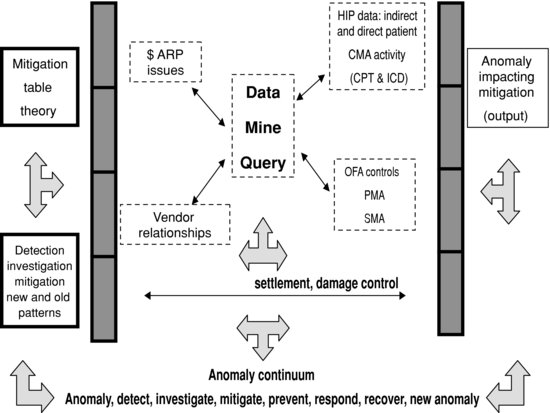Mitigation Model
The concept of mitigation builds on issues noted within detection and investigation, along with the subsequent models to be discussed in this chapter. Mitigation is the act of reducing or making a certain set of circumstances less severe.
In the case of Dr. Healer, mitigation occurred in the prosecution of Dr. Healer. Dr. Healer was convicted of false claims and removed from the system as a licensed physician, thereby preventing further harm and loss. Other applicable issues were substandard care and medical believability patterns. What made this case complicated was tracking down Dr. Healer’s assets. Ultimately, Dr. Healer did receive a criminal conviction, civil lawsuits were initiated, and he did lose his license.
Mitigation does not stop at the point of conviction of the perpetrator. The findings of this anomaly should be followed up with the third-party administrator’s (TPA’s) adjudication and editing procedures. It feeds our mitigation model in Exhibit 20.3 by adding the experience back into the system. Incorporating the pattern of this fraud into the model prevents or minimizes similar occurrences, helps find ongoing schemes elsewhere with other parties, and reduces the time it takes to discover these schemes. Mitigation feeds detection by reducing the amount of time it will take to make a fraud known in the future.
Exhibit 20.3 Mitigation Model

As previously ...
Get Healthcare Fraud: Auditing and Detection Guide, 2nd Edition now with the O’Reilly learning platform.
O’Reilly members experience books, live events, courses curated by job role, and more from O’Reilly and nearly 200 top publishers.

